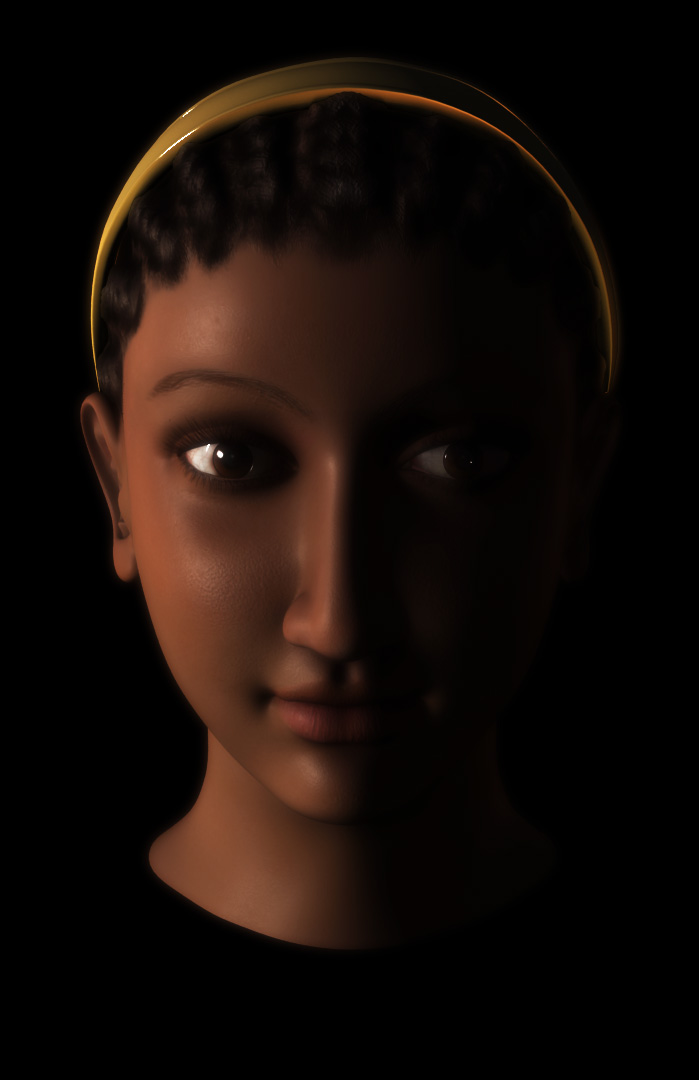Reconstructing Cleopatra
I have always hesitated to take part in documentaries, because although they set out to be factual, producers often have a set agenda and story that they wish to explore. This agenda quickly becomes apparent in the types of questions that are asked of specialists, and no matter how hard you try to avoid acquiescing, it is the filmmakers who have the ultimate control in the way that they edit.
In 2008 I was asked, in light of writing a book on Cleopatra, to take part in a documentary on the subject of the queen. The producers wanted to reconstruct how Cleopatra might have looked and asked if this would be possible. I said that it was, by looking at statues of the queen. However, from the offset I said that I would only take part if the producer was prepared not to perpetuate the myth that Cleopatra looked like Elizabeth Taylor in the eponymous film.
A brief background to Cleopatra
Cleopatra was descended from Macedonian Greeks, who first arrived in Egypt with the army of Alexander the Great in 332 BCE. Following Alexander’s death in 323 BCE Ptolemy, one of his generals, took control of Kemet. By the time Cleopatra first came to power in 51 BCE her family had lived in Egypt for two hundred and seventy-two years. In terms of Cleopatra’s immediate ancestry we do not know the identity of Cleopatra’s grandmother, who was a concubine rather than official wife, nor are we certain who her mother was. It is therefore possible that the concubine(s) were either of Macedonian Greek descent but equally possible that they were indigenous Kemites, along with the majority of the population at that time. We know from documentary research that an increasing number of the population of Ptolemaic Egypt had mixed Greek-Kemite ancestry. This can be documented through people’s names.
Following a process (of sorts)
With this in mind, I began to work remotely with a company that specialised in computer-generated images. I sent them photographs of a statue of Cleopatra that was found in Rome at a sanctuary of Isis (below left). In case people are wondering, the nose was damaged when the statue was used as ballast in a later building on the site of the original sanctuary. In spite of the statue’s later fate, aside from some surface damage to the nose, all of the features (including the original shape of the nose) were present. I naively thought that this would be a simple task.

The initial images that were generated can be seen above alongside the original statue. Although the fullness of the mouth has been maintained, little else of the physical features have survived. The nose has been narrowed, the fullness of the jaw line has also been trimmed, and the eye shape is not true to the original.
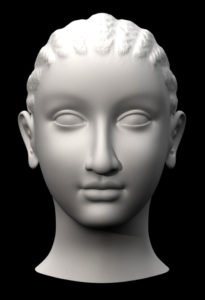
The initial attempts looked nothing like the statue. However, eventually we were able to produce features that were closer to the original statue than the first attempt (above). There next challenge was the hair. On the statue that was used as a model for reconstructions Cleopatra is shown with layered locks. The style is a longer version of that worn by Kawit, who was a royal wife of King Montuhotep Nebhetepre, who ruled Kemet from around 2046 to 1995 BCE. Kawit appears on the side of a sarcophagus (coffin) with her hairdresser, who attaches a piece of styled hair to the royal wife’s head (below).
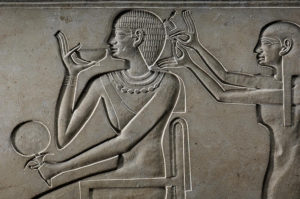
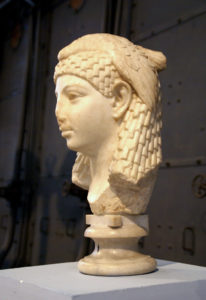
In addition to her hair, the statue (left ) presents the queen with a vulture headdress (the head of the vulture is now missing); this symbol identified her as a goddess. The statue doubtless shows Cleopatra as Isis. All of Cleopatra’s representations in her homeland show her as an Egyptian ruler. It is only on coinage minted overseas and on two sculptures that were manufactured in Italy that she was presented with Greek iconography, showing her as a Classical ruler.
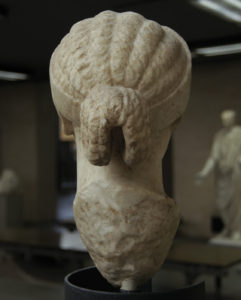
The two Classical sculptures (see one example above) also depict Cleopatra with coarse, curly hair; in both instances it is twisted and pulled back into a small bun. The hairstyle was unusual on Classical sculptures, and if we compare the queen’s hair to her predecessors we see waves but not with the coarseness or to the extent that we find on Cleopatra’s Classical-style representations. In short, the closest parallel that I could find for her hairstyle was either twists or plaits that are both commonly worn by people of African descent with African-type hair. The resulting style that was created by the digital artists was somewhere in between (see below and also feature image).
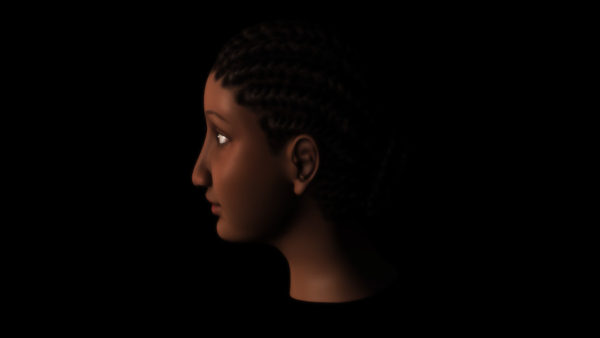
Responses to the images
Just before the documentary was shown, The Daily Mail (a tabloid newspaper for those reading this blog outside of the UK) ran an article on the reconstruction. The article was entitled ‘Sorry Liz but THIS is the real face of Cleopatra’. The article summarised the documentary and showed a picture of the reconstruction. The wider circulation of the reconstructed images and the opportunity for readers to share their comments on the newspaper’s website, provided a forum for the general public to air their, unsubstantiated, points of view on the racialized identity of Cleopatra.
Some comments were dismissive, others were outraged, and some revealed racist attitudes and ideals embedded within the doctrines of European/White supremacy. From a social psychological perspective, many of these comments enable a clearer understanding of the roots of prejudice and racism more widely. Many reminded me of an encounter that I observed in New York in 2006, and which I wrote about in one of my books on Cleopatra (Cleopatra and Egypt). I was undertaking research at the Metropolitan Museum of Art and heard a man, who it seemed from the conversation was of American nationality and Greek descent talking to his sons. He said to them that in school they would be told that the Egyptians were the forefathers of African-Americans and that this was wrong. He asked his children if the figures on a temple looked like African Americans and they shook their heads in agreement with their father, who then went on to remind them that Cleopatra who was Queen of Egypt was Greek, as indeed were their own ancestors.

The temple to which the man referred dated to the reign of the Emperor Augustus. It was not, therefore, a representative example for the man to use in his lesson. Nevertheless, this conversation and many of the responses to the idea that ancient Egypt was an African civilisation and that Cleopatra may have been herself part African are revealing in the sense that they allow those of us to see exactly why people react so vehemently against the idea.
What’s the problem?
If the idea that Cleopatra was of mixed African/Macedonian Greek ancestry is so bizarre, why do people respond so strongly? Why does she have to remain ‘pure’ as one commentator on the Daily Mail website stated? The answer lies in an earlier post that I wrote about cognitive dissonance, and in many respects the Cleopatra ‘experiment’ reveals this. It is strange that people use Shakespeare and Hollywood to evidence how Cleopatra simply couldn’t have looked like the proposed reconstruction rather than turning to the images of the queen that have survived from her lifetime. It is ironic that some people of European descent wish to maintain ownership of Cleopatra. Octavian, who later became the Emperor Augustus, was not so keen to welcome either her, or her son by Julius Caesar to Rome and it is quite apparent that the Queen was seen to be Egyptian.

